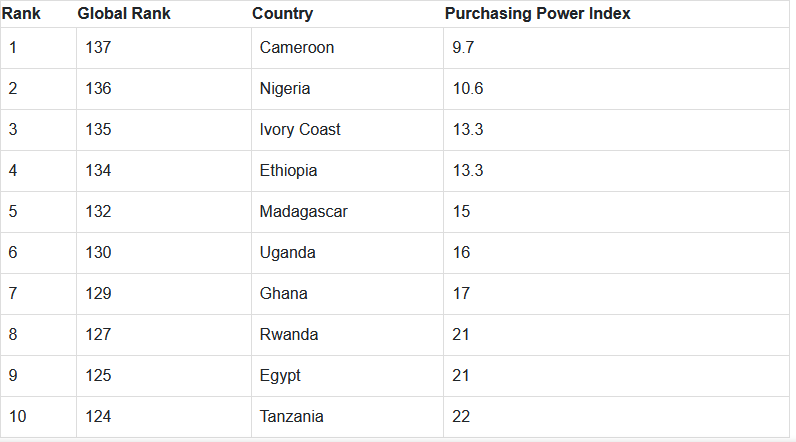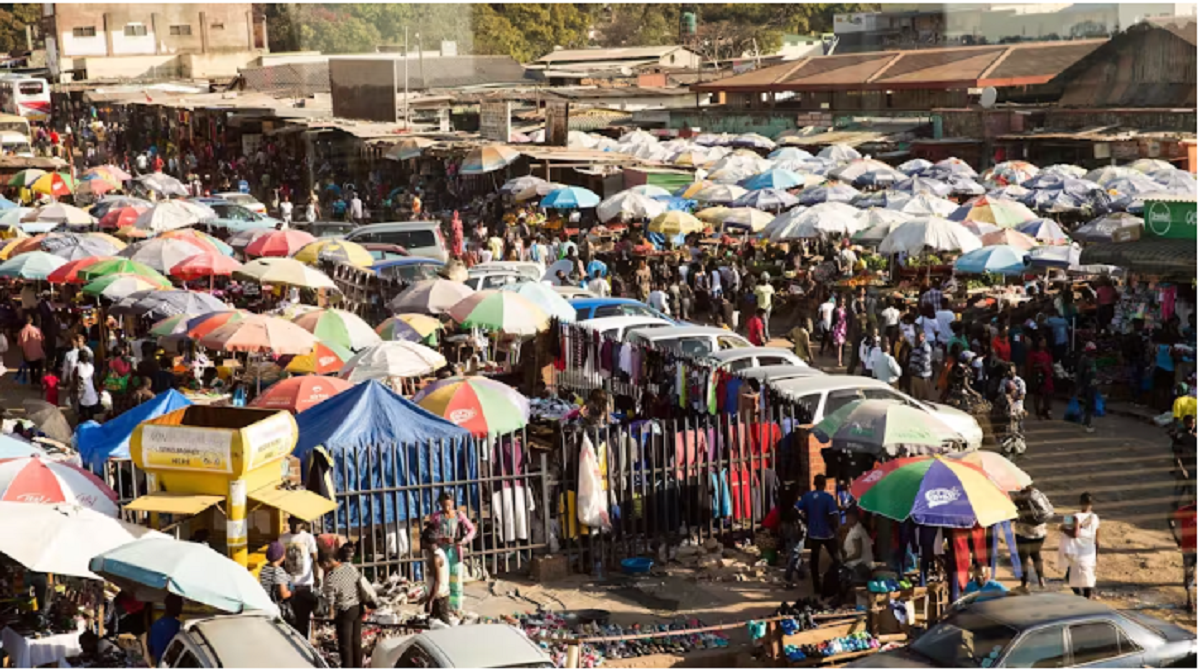Many African nations grapple with low purchasing power, hindered by factors such as high poverty levels, weak industrialisation, political instability, and restricted access to global markets.
Numbeo’s Purchasing Power Index measures relative purchasing power based on average net salaries. A score of 40, for instance, means that residents earn, on average, 60% less purchasing power than those in New York City, highlighting stark differences in affordability and living standards.
Purchasing Power and the Economy
While low purchasing power is often associated with weak economies, the relationship is not always absolute.
Purchasing power, which reflects individuals’ ability to afford goods and services, is closely linked to GDP, economic diversification, and income distribution. Many African nations, such as Nigeria, Cameroon, and Ivory Coast, rely heavily on raw material exports. However, price volatility, limited job creation, and income inequality prevent the broader population from reaping the benefits of these industries.
Currency depreciation and inflation further erode purchasing power. In Nigeria, the naira’s decline has made everyday essentials more expensive, while Ghana’s inflation crisis continues to strain household budgets.
Economic instability, compounded by high levels of debt and fiscal mismanagement, weakens investor confidence and limits long-term growth prospects.
The Importance of High Purchasing Power
Stronger purchasing power contributes to poverty reduction and a better quality of life. When wages are higher relative to living costs, citizens gain better access to essential services such as healthcare, education, housing, and nutrition—improving overall well-being and economic stability.
According to Numbeo’s Purchasing Power Index, the table below highlights African nations with the lowest purchasing power in 2025;

The table highlights African nations with the lowest purchasing power as of January 2025, showing that residents in these countries can afford fewer goods and services compared to global standards.
For example, Cameroon (9.7) and Nigeria (10.6) struggle with high inflation and currency instability, which erode the real value of earnings.
Likewise, Ivory Coast (13.3) and Ethiopia (13.3) face structural economic challenges, including heavy reliance on primary commodities and limited industrialisation.
Low purchasing power hampers economic growth by restricting domestic consumption, reducing savings, and discouraging investment. This, in turn, slows development and lowers living standards.
If African nations improve purchasing power, their economies will expand, living conditions will improve, and investment will rise. Greater affordability stimulates domestic demand, driving economic growth and broader prosperity.


 Trending
Trending 